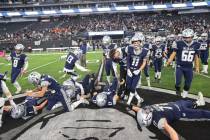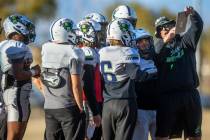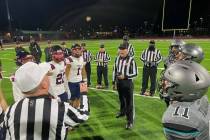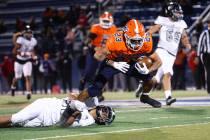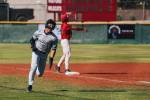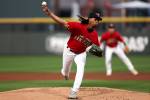The tick-tock on baseball with a clock
A couple of weeks ago, I wrote about how these pitch clocks being used in the minor leagues this season eventually were supposed to speed up major league baseball.
Frank Viola, the 51s pitching coach and a former Cy Young Award winner, sort of seemed down with it. Viola was a fast worker when he pitched.
I was sort of down with it, too.
That was before they turned on those clocks.
After watching my first 51s game with the clocks turned on, I have changed my mind — about the clocks, about the other speed-up rules, about guys, mostly left-handers, being called into the game to pitch to only one batter. About towering pop flies that take forever to come down.
About all of it.
If, when the sun finally pokes through the clouds and an outfielder calls time to retrieve sunglasses left in the dugout — though you can attach these new plastic ones to your cap — I’m OK with it.
I’m even starting to think the Houston Astros’ striped jerseys of the Billy Doran-Enos Cabell era weren’t all that bad, until all these slow-pitch softball teams adopted the style.
When they turned on those clocks at Cashman Field — one behind home plate, another beyond the wall in left-center field — I was distracted by them.
I also was distracted by a woman jumping onto the field by the Las Vegas bullpen before the game started, and having to be hauled off by security, thereby delaying the start. But I don’t think the pitch clocks were to blame.
They did seem too big, though.
I guess I was expecting something less obtrusive, such as the basketball shot clock. You hardly seem to notice the shot clock, though it sits conspicuously atop the backboard.
(If memory serves, they used to place the shot clock on the floor in the corner at NBA games. That was before NBA teams hired go-go dancers and called them cheerleaders, and had them strut around in the corners and under the basket where the kid with the long mop used to sit.)
One supposes they had to make the baseball pitch clocks big enough so Cowboy Joe West and the other geezer umpires could see them. The lighted numbers seem way too big, too.
10 ... 9 ... 8 ... 7 ... 6 ...
Pitch.
Reset.
Instead of watching the pitch, I kept watching the big clock with the big yellow numbers.
What did I miss? Mostly balls outside, and balls inside, and balls that were high, and balls that were in the dirt — this was a minor league game.
But when Dilson Herrera, the 51s’ little second baseman, hit a ball that landed approximately 447 feet from home plate, according to somebody in the press box, I didn’t see the ball leave the bat, or the yard.
I was watching that damn pitch clock.
5 ... 4 ... 3 ... 2 ... 1 ...
I don’t remember the clock ever getting to 0. Had it gotten to zero, nothing would have happened, anyway. April is a grace period for pitchers, and for batters who take too long adjusting their batting gloves between balls outside and inside.
Starting in May, those who dilly and dally for more than 20 seconds will be penalized a ball or a strike.
Like I said, this sounded like a good rule.
But as I watched those big yellow numbers tick down, I remember feeling stress, a sort of angst. It was just another deadline to be beaten, or worse, reminiscent of sitting in the DMV when one forgets his Kindle.
Until now, baseball was the only major sport without a clock, and perhaps that was the beauty of it.
Sure, the games are slow now, a lot less brisk than when Bob Gibson and Tom Seaver and the other pitchers of that era usually would start what they finished, without requiring relief help.
But upon further review — these incessant replays are slowing the game, too — perhaps longer games without pitch clocks weren’t so bad.
When a game drags, the diversion continues. Longer ballgames mean less time worrying about the job, or the kids’ college education, or whatever.
There’s more time to visit the concourse for nachos.
Plus, you don’t need the express written consent of Major League Baseball to leave in the bottom of the seventh when the home side is trailing 9-2, and Junior has lapsed into a nacho-induced coma, and the report needs to be on Dithers’ desk first thing in the morning.
The Wall Street Journal performed a study in 2013 where it calculated the average major league ballgame has only 18 minutes of action, with action being described as time when the ball is in play.
Which doesn’t sound like much action.
Until you learn an average NFL game has only 11 minutes of action, and lasts just as long.
Las Vegas Review-Journal sports columnist Ron Kantowski can be reached at rkantowski@reviewjournal.com or 702-383-0352. Follow him on Twitter: @ronkantowski.


















